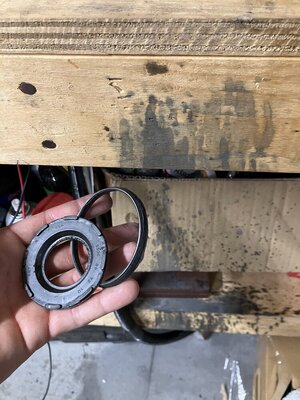Hey y’all, it’s been a while! Used to be on here quite a bit with a different account but got out of the jetski game for years until I bought a nice gen2 the other week. Unfortunately I can’t get it to run how I want yet. It’s an 800, r&d head, b pipe, and dual 44s, blowsion flame arrestors, 170/180 compression on both cylinders. The carbs currently have 120 pilot and main jets, 2.3 needle and seat and 65 gram pop off spring.
I am able to tune the top end and get it very clean at full throttle with good plug chop readings. It revs from idle okay, but has a hesitation in the mid range before spinning up to wot. It’s not bad enough to stall the motor but it takes a second to reach full rpm. This rpm range seems to have more engine vibration too. The result is when riding it’s either full throttle or near idle, it can’t really hang out in the mid range without hesitating and then taking off. I’m really just curious if I need to change jet sizes or just keep tuning.
I see that factory pipe recommends 152.5 mains and 80 pilot jets for their pipe but that’s on stock Sxr carbs, so unsure if the bump to 44s would still work for those jet sizes or not. Thanks for any advice y’all can give! Im gonna upload a video of it running to YouTube and try to post the link here too.
I am able to tune the top end and get it very clean at full throttle with good plug chop readings. It revs from idle okay, but has a hesitation in the mid range before spinning up to wot. It’s not bad enough to stall the motor but it takes a second to reach full rpm. This rpm range seems to have more engine vibration too. The result is when riding it’s either full throttle or near idle, it can’t really hang out in the mid range without hesitating and then taking off. I’m really just curious if I need to change jet sizes or just keep tuning.
I see that factory pipe recommends 152.5 mains and 80 pilot jets for their pipe but that’s on stock Sxr carbs, so unsure if the bump to 44s would still work for those jet sizes or not. Thanks for any advice y’all can give! Im gonna upload a video of it running to YouTube and try to post the link here too.

